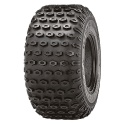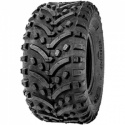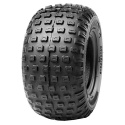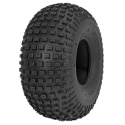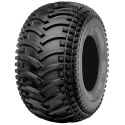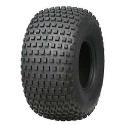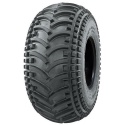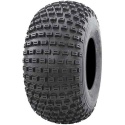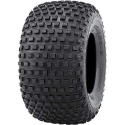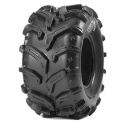ATV Trailer Tyres












Our range of ATV Tyres covers any type of terrain you may wish to conquer. Road patterns for tarmac, hard pack and dirt applications. All terrain vehicle tyres for mixed use, trail riding and forestry work, mud for those who need the best grip in the stickiest conditions. We also stock ultra heavy duty 8 ply radial Utility Quad Tyres which offer the highest level of puncture resistance durability and reliability. No matter what you use your ATV for, we can provide the perfect solution for you and our team are here to help advise you in getting the best and most suitable setup for your requirements and budget.
When it comes to ATV tyres, we believe our range offers the very best selection of tyres on the market. Our years of experience has led to the development of our ATV tyre range to offer a broad selection of high quality tyres for almost any purpose. As we like to test our products, we can offer an unbiased opinion on the tyres we sell. If you have specific requirements or are looking for tyres for a particular use, we can offer advice on which patterns will best suit your needs. Above are all of the available Farm Quad Tyres that we sell including all the different ply ratings and tread patterns. By clicking on any of the product images above you can access more detailed information on the tyres including suitable terrains, ply rating, prices and other important specifications. Please contact us if there is anything you require that you can't find here and our team will be happy to help you with any query.
We offer a great choice of tyre brands and patterns to suit all requirements and budgets. Some of our most popular ATV tyre brands include BKT, Duro, Wanda, SunF, Innova, Carlisle, Maxxis, CST, ITP, Kenda, Artrax, Deli and Hyper. If you have any questions relating to your atv tyre purchase, please contact our team of advisors, who are always happy to help.
Finding the correct tyre for your ATV involves knowing the correct tyre size. The size is usually written on the sidewall of the tyre and can be displayed in a number of different ways. We have detailed an explanation of how the different methods of measuring the tyre can be written below:
Imperial Tyre Sizes - e.g. "25x8-12"
This measures the size of the tyres in inches. The first number denotes the overall diameter of the tyre which in the example above is 25". The middle number is the overall width of the tyre which is 8" in the example above. The last number is the diameter of the rim (wheel) in inches. in this example it would be 12"
Metric Tyre Sizes - e.g. "165 / 70 - 10"
This is the newer, 'metric' measurement where the first number is again the width of the tyre, but is measured in mm. In this case 165mm. The second digit represents the tyre sidewall profile (height) as a percentage of the width. In this example the sidewall height would be 70% of 165mm (approx. 115mm). The last digit is again the diameter of the rim (wheel), still measured in inches.
There is more to choosing an ATV tyre than just the size required. ATV tyres are made and tested to work under certain criteria and limitations and the marking found on the sidewall of the tyre, all help choose the correct tyre for the application.
Maximum Inflation Pressures
show what the maximum pressure that should be used to 'seat the beads' of the tyres onto the rim. ATV tyres are notoriously difficult to fit and it is tempting to inflate the tyre pressure far beyond the maximum pressure marked on the sidewall. This can cause premature failure of the structure of the tyre and is something that should be avoided at all costs. The use of the correct tyre lubricant and fitting equipment is always recommended to ensure the safe operation and continued reliability of the tyre.Operating Pressure
shows what the optimal tyre pressure is to use in the tyre. If the tyre has a load speed index, the operating pressure is where the maximum load and speed are achieved. Inflating the tyre beyond the recommended operating pressure will not increase the carrying capacity or performance of the tyre.Load Index
is the limit of weight that the tyre can safely carry at the recommended operating pressure. ATV Tyre manufacturers design the tyres to operate within certain weight parameters. Once the tyre has passed the tests, it is awarded a load rating. It is essential that the correct load rating is used for ATV tyres. Most all terrain vehicles used around the farm are worked hard and fitting a tyre that doesn't meet the requirements of the conditions can lead to premature wear, tyre damage or failure. Load indices are usually denoted by a number. The number itself is not the actual weight carried but represents the maximum weight that the tyre has been designed and tested for. Most tyres have a load index between 0 (45kg's) and 90 (600kg's). For more information on the ATV tyre load index, please visit our load index chart page.Speed Rating
is the maximum speed that the tyre has been designed to operate at. As with the load index, the speed rating is an important part of any tyre purchase. Ensuring you have the correct tyre for the job means better operation, reduced downtime and associated costs and increased overall value. ATV tyre speed indices are usually shown as a letter ranging from C (37mph) to N (87mph).Some ATV tyres may not have any load speed index marked on the sidewall, but most e-marked tyres will show the load speed index. The load speed index is usually clearly marked on at least one of the sidewalls of the tyres.
Ply Ratings
can be quite confusing in modern times and used to be the standard way to represent the overall strength of the tyre. Ply rating used to show how many plies of rubber that were used to make up the construction of the tyre. For example, if a tyre had a 6ply rating, it would be made up of 6 plies (layers) of rubber. Modern advances in all terrain vehicle tyre technology have lead to other materials than rubber being used and construction methods increasing the strength of the tyre. The PLY rating is less commonly used to convey the number of plies and is now more relevant in showing the strength of the tyre AS IF it had that number of plies of rubber. ATV tyre ply rating is still useful in assessing the overall strength and puncture resistance of the tyre.E-Marks
show the specific number allocated to the tyre, that have been allocated for use by the EU. The 'E mark' or 'e number' shows that the tyre has been manufactured to a specific criteria and recorded by the EU for use in the EU. All tyres used on PLG registered vehicles including All terrain vehicles must have e marked tyres to be classed as roadworthy / legal. E marks are also a requirement to pass an MOT test in the UK for PLG registered vehicles.Similar to most modern tyres, there are two main types of ATV tyre, Crossply and Radial.
Crossply All Terrain Vehicle Tyres
Are still the most common type of ATV tyre available. The reduced production costs and increased sidewall durability make it an excellent choice for both classic and modern ATV's. As all terrain vehicle tyres are usually run on very low pressure (<7psi) they gain a lot of the sidewall comfort benefits that you would usually gain from a radial construction tyre. As ATV's also have a good range of suspension travel, the comfort of the rider is rarely adversely affected by the crossply construction. Crossply tyres can also allow for better deformation around obstacles and have an increased contact patch for grip on rougher terrains.
Radial All Terrain Vehicle Tyres
Are usually found on more modern machines and machines that run larger tyres. Radial ATV tyres offer certain benefits over their crossply counterparts. As a radial tyre is made up of two main sections (tread & sidewall) It allows the tyre to have characteristics that make it suitable for a wide variety of applications.
As the sidewall of a radial tyre moves in a different way to the tread section of the tyre, extra comfort and stability can be engineered into the tyre. This can allow for a quicker response to changes in terrain, especially at high speeds and can also help reduce the transmission of vibrations through the steering. Radial ATV tyres also offer better performance on the road and hard packed surfaces. The tread section of the tyre has a more consistent contact patch with the surface and allows for increased corning and stability in changes of direction. The increased lifespan often associated with radial tyres can often help offset the initial higher cost price usually found with a radial tyre.



